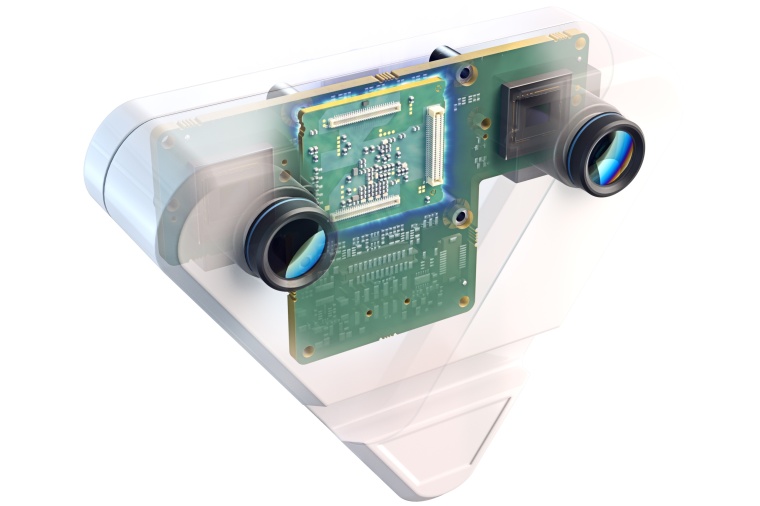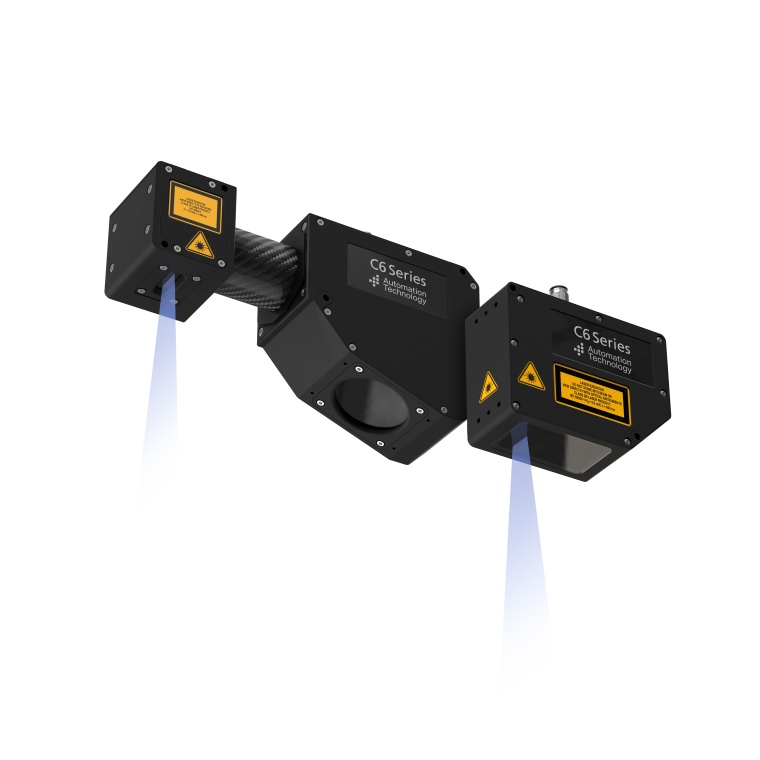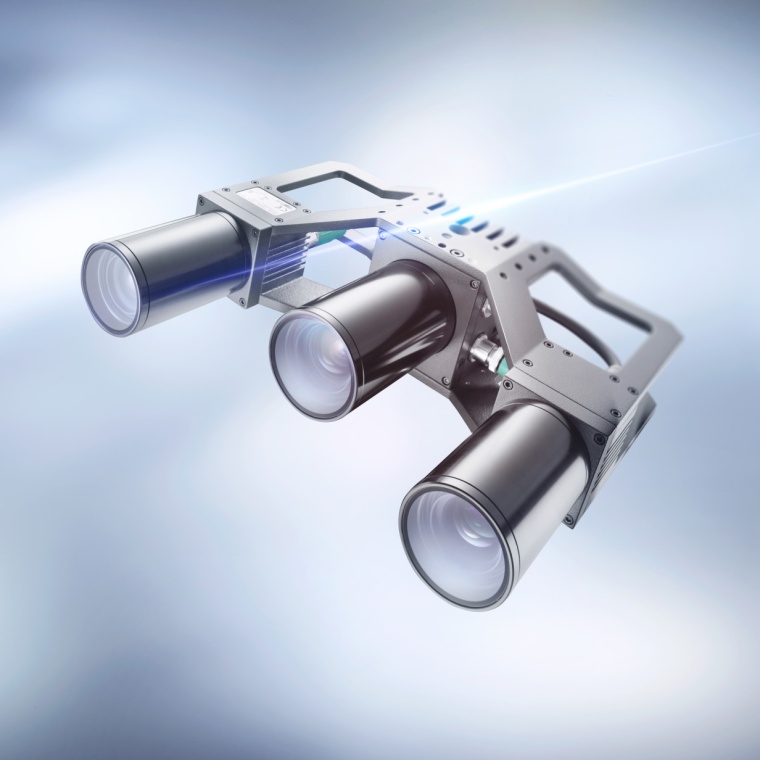Embedded Vision: Many good reasons for continued strong growth
The embedded vision market continues to grow strongly. One aspect of this success is based on technical advancements that expand the spectrum of possible applications.

The embedded vision market continues to grow strongly. On the one hand, this success is based on technical advancements that expand the spectrum of possible applications. On the other hand, however, the prices for some technologies are also falling sharply, which is additionally boosting demand. This market analysis addresses these aspects and also provides examples of the key players in the individual areas, including some product developments.
According to projections (based on the study by The Business Research Company), global embedded vision revenue reached USD 7.3 billion in 2022, with average annual growth of 9.5 percent. Total machine vision revenue in the same year was USD 14.66 billion. Annual growth here is reported at 8.3 percent. Unsurprisingly, the embedded vision market is growing much faster than the PC-based market.
The reasons for this, apart from new product developments, are in particular technical advancements and the growing demand for solutions in numerous segments.
Embedded systems account for a large share of the fast-growing 3D sensing market
For example, 3D imaging and sensing is currently developing at breakneck speed. The focus is on reducing the size of pixels, which increases image quality and thus enables new applications, according to a report by Yole Intelligence. At the same time, 3D sensor technologies, such as lidar, are gradually opening up swir in addition to the visible spectrum, which significantly expands the sensors' detection range. Taken together, these developments could then lead to 3D single-camera systems prevailing over short-range stereo technology. In terms of cost, they certainly have the edge in terms of design.
How strong the impact of this technology can be on the embedded vision market can be seen in the sales and installed devices: In 2022, 409 million installed devices generated USD 8.2 billion in revenue. Mobile and consumer markets accounted for the majority of applications. However, 3D sensing is increasingly diversifying, with applications in cars as well as industry gaining traction. By 2028, Yole Intelligence assumes the total market for 3D imaging and sensing will more than double to USD 17.2 billion. A good portion of this will be generated by industrial quality assurance, autonomous driving, traffic monitoring or agriculture. These are all classic fields of application for embedded systems.
3D sensors experience their heyday
Essential companies in 3D imaging include Matrix Vision, which recently introduced the BVS 3D-RV1 3D camera with integrated pattern projector. It achieves detection accuracy with its 12-megapixel sensors, which is especially necessary for handling small and complex parts in a wider field of view - such as bin picking.
Likewise IDS with its Ensenso-N 3D cameras, also with integrated pattern projector. They are suitable for capturing static and moving objects. With the N31, N36, N41 and N46 models, the camera manufacturer has now launched the next generation of the series.
Vision Components, based near Karlsruhe, Germany, presented new VC-Mipi camera modules with Swir and 3D/ToF sensors at the Embedded Vision Summit. These can be used, for example, to build a stereo camera with direct data processing on the edge device.
North German machine vision manufacturer Automation Technology is supplying the AT Solutionpackage, a software package that speeds up the commissioning of its own 3D sensors. It includes numerous programs for metrology applications that can be quickly incorporated into the company's own solution.
Teledyne Dalsa's portfolio includes the Hydra 3D+, a high-resolution time-of-flight sensor. With a resolution of 832 x 600 pixels, it is suitable for pick-and-place applications in logistics or robot navigation in industry, for example.
Other key companies in this field include Baumer, Basler, LMI Technologies, Cognex.


Swir: Strong growth expected from small base
Despite the great strides Swir technology has made in recent years, it was still a comparatively small subsector in 2022, generating about USD 89 million in revenue from industrial applications, according to Yole Intelligence. But the growth prospects are very strong: the company projects average annual growth of 28 percent from 2022 to 2028, which would put revenue at $395 million in just over five years.
This forecast is fed by steadily falling prices and high demand. Falling prices are continuing to drive demand because the technology is thus becoming economically viable in more and more areas of application. Currently, Swir systems can be found in quality assurance in the food and packaging industries or in sorting processes in the recycling industry.
Swir for embedded systems: The range is growing
Allied Vision has introduced Alvium 1800 Swir camera models with Sony's Senswir sensor technology. According to the manufacturer, the Alvium Swir core modules are currently the smallest industrial-grade, uncooled shortwave infrared (Swir) cameras available on the market and are suitable for building compact OEM systems for embedded and machine vision applications.
Other companies offering products for the Swir spectrum include Edmund Optics, Kowa Optimed, Teledyne Flir and Sill Optics, in addition to the aforementioned Vision Components.
AI evaluation on site
"There's a big desire to concentrate computing power where the data is generated and where it has a connection," Mark Oliver, vice president of marketing and business development at Efinix, said in an inspect interview last year. A big driver of this development is the increasing use of artificial intelligence. This is significantly increasing the demands on embedded hardware, which in turn is driving market growth.
The reason for the connection between embedded and AI growth is often the required real-time availability of the acquired data. This is a task that "conventional processing techniques cannot easily accomplish or they become prohibitively expensive for custom solutions," Oliver explains.
For now, AI on embedded devices is being used particularly in the automotive industry and in cell phones, explains Jeff Bier, founder of the Edge AI and Vision Alliance, in an interview with inspect America. But in addition to industrial applications, Bier expects embedded vision combined with AI to grow strongly, particularly in healthcare, for example, to detect patients at risk of falling. There are also an increasing number of consumer products that rely on this technology, from home appliances to security cameras and doorbells, he said. And embedded vision is also gaining traction in the retail sector, from cashier-less checkouts to inventory and stock control.
The number as well as the range of market players is very high in the field of artificial intelligence. These include software manufacturers such as MVTec as well as camera manufacturers such as Automation Technology or IDS - to name just a few. But also FPGA manufacturers such as Efinix deal with AI, just as AMD offers SOMs that are often used for AI applications.
Author
David Löh
Editor-in-Chief of inspect
Company
Xilinx GmbH, an AMD companyWilly-Brandt-Allee 4
81829 München
Germany
most read

SPS 2025: Cautious optimism in automation
A picture of the mood of the German economy

There’s a Large Hippo Resting in the Mud
Virtual Video Safaris for Blind and Visually Impaired People







